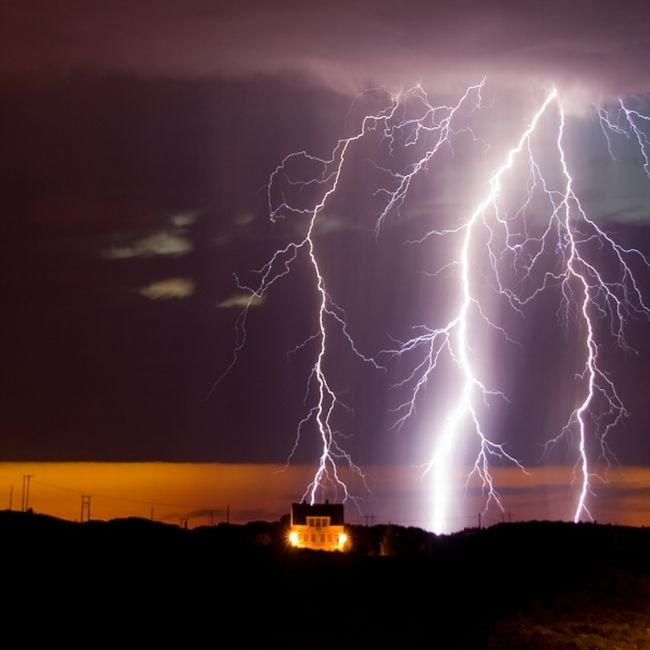|
|
Lightning Photography
|
Trees and lightning
Trees are frequent conductors of lightning to the ground. Since sap is a poor conductor, its electrical resistance causes it to be heated explosively into steam, which blows off the bark outside the lightning's path. In following seasons trees overgrow the damaged area and may cover it completely, leaving only a vertical scar. If the damage is severe, the tree may not be able to recover, and decay sets in, eventually killing the tree. In sparsely populated areas such as the Far East and Siberia, lightning strikes are one of the major causes of forest fires. The smoke and mist expelled by a forest fire can cause electric charges, multiplying the intensity of a forest fire. It is commonly thought that a tree standing alone is more frequently struck, though in some forested areas, lightning scars can be seen on almost every tree.
The two most frequently struck tree types are the oak and the elm. Pine trees are also quite often hit by lightning. Unlike the oak, which has a relatively shallow root structure, pine trees have a deep central root system that goes down into the water table. Pine trees usually stand taller than other species, which also makes them a likely target. Factors which lead to its being targeted are a high resin content, loftiness, and its needles which lend themselves to a high electrical discharge during a thunderstorm.
|
|









